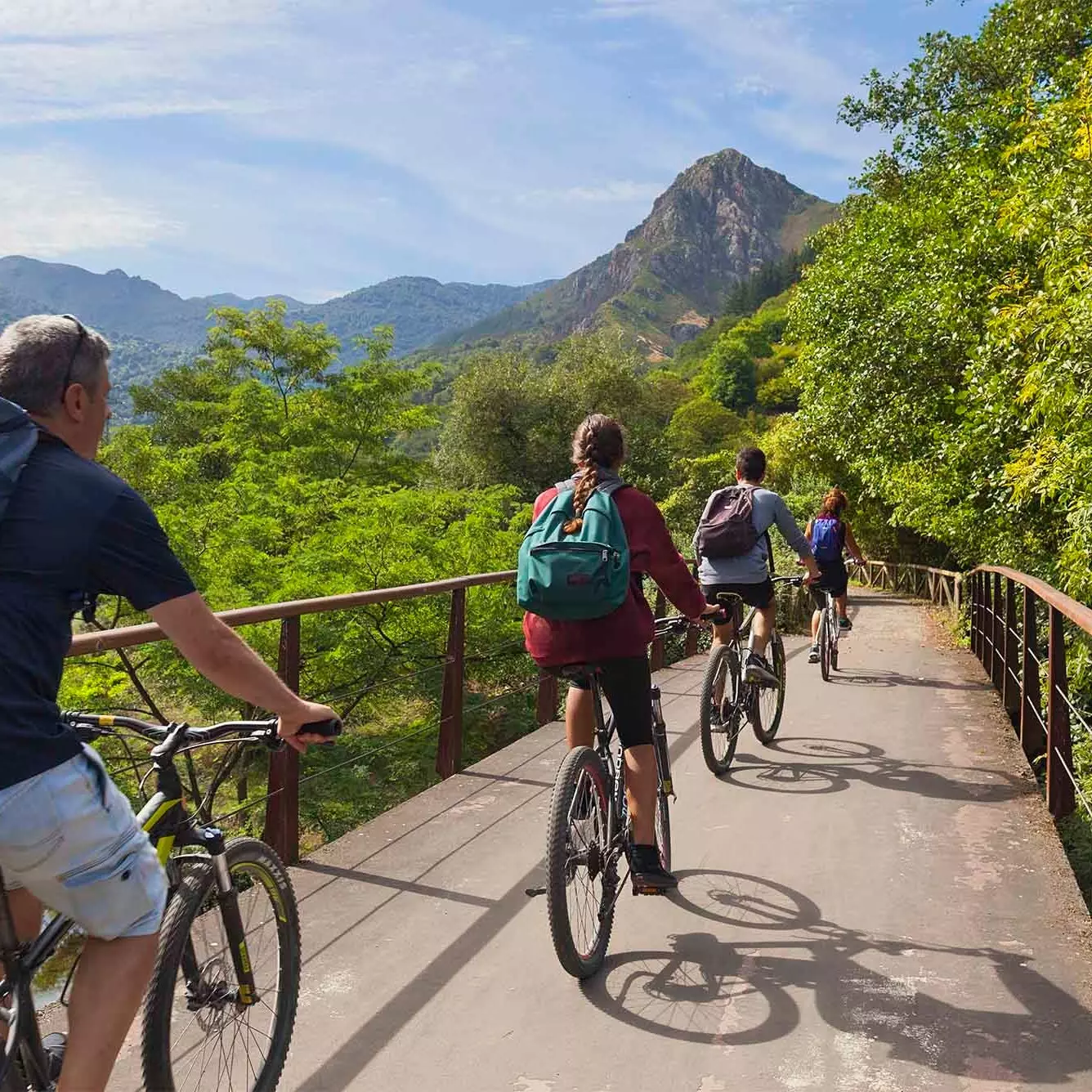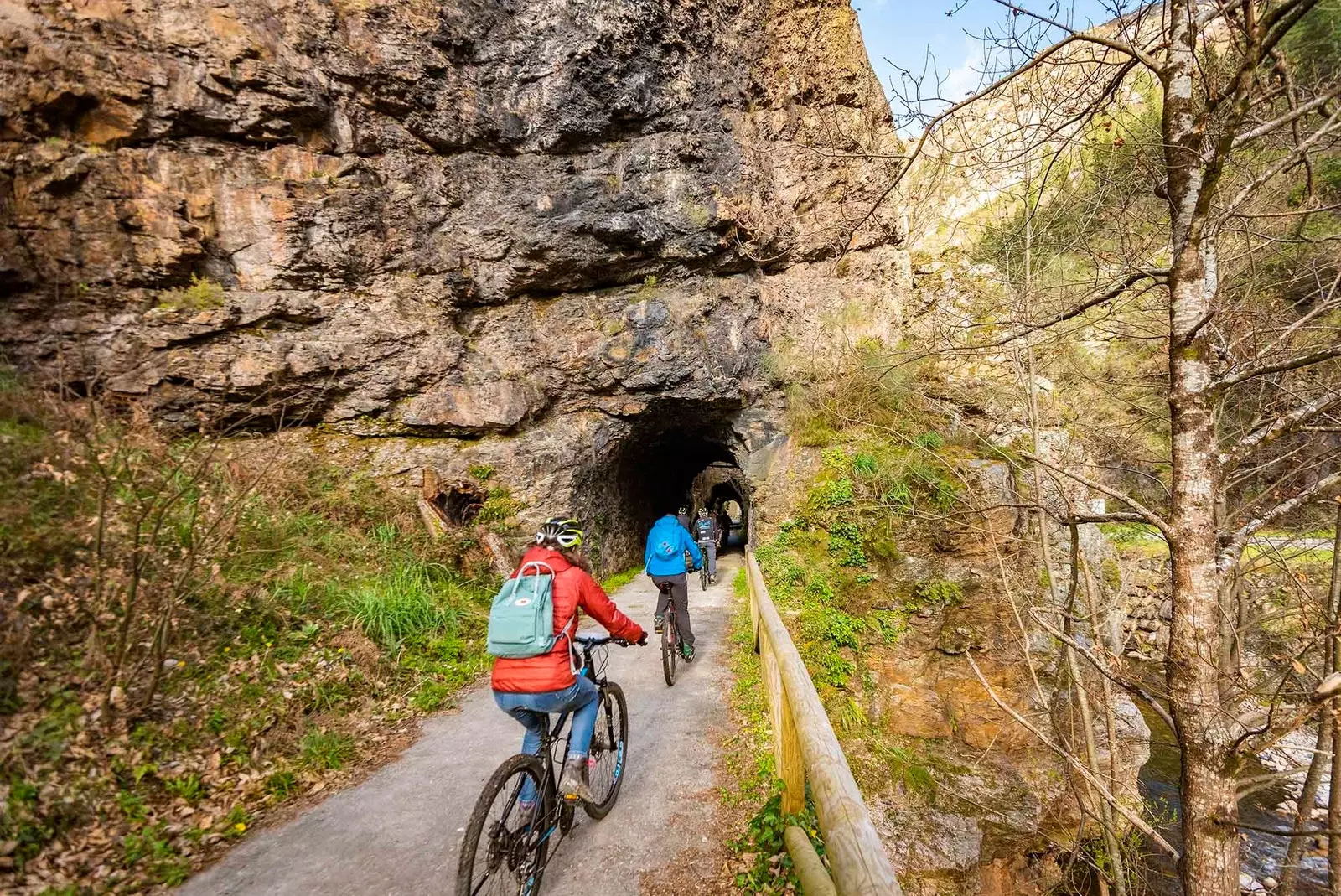
22 kilometers of nature to enjoy on foot or by bicycle
The Senda del Oso has everything we like about Asturias summarized along a single route: beautiful stone villages, virgin vegetation, fairytale valleys, mighty rivers... . Its 22 kilometres, which can be done walking or cycling , replace the railway to transport coal from Proaza and Teverga to Trubia, which was built in the 19th century. 100 years later, the road was abandoned, and later, converted into the beautiful path that it is today.
Along the way, we will look out over dizzying gorges and cross 11 old bridges over the Trubia, Picarós, Teverga and Llanuces rivers, as well as numerous tunnels through which the train used to circulate , some, with more than a hundred meters in length. The mystery of the underground sections gives way to the exuberance of the outdoor stages, which offer the opportunity to learn about the typical crops of the area, to observe the traditional hórreos and to greet the cows, in a typically northern setting.
The trail, which reaches from Tuñón to Entrago and is shaped like a 'y', is designed for all audiences , since it always runs along asphalted terrain, with a protective fence. In addition, it has frequent sources for supplies and several rest areas, and is dotted with information signs that provide information on the typical flora and fauna, on the monuments of the area and on alternative routes, since you can leave the Path in several sections, so it is possible to go through it in stages during different days.

The Path goes through numerous tunnels
PACA AND MOLINA, EXCEPTIONAL GUESTS
An essential part of our visit, as communicated to us by Turismo de Asturias, is the bear house , a center with information about this protected mammal, which still lives freely in the Cantabrian Mountains.
It is also possible to meet the only specimens of Cantabrian brown bear in the world that remain in captivity , Paca and Molina, who live in two fenced spaces. The first, with more than four hectares of mountain, was inaugurated in 1996 due to the need to find a place to house what were then two female Cantabrian brown bear cubs, Paca and Tola, who were rescued from the hands of poachers. . Their impossible reintroduction into the natural environment, due to being accustomed to human presence, was what motivated the creation of this space, as explained to Traveler Turismo de Asturias. Tola passed away in 2018 from natural causes.
Currently, there is also another fence, built in 2008, which is located on the opposite side of the path. Both are located in Santo Adriano, on the edge of the Senda del Oso, so it is possible observe Paca and Molina -rescued in 2013- , for example, when they come to eat. "This type of facility, unique in the Cantabrian Mountains, can be used both for the recovery of animals and to collect those that cannot adapt to wild life," reports the Bear Foundation of Asturias.
WHAT TO SEE ON THE PATH OF THE BEAR?
The Pre-Romanesque church of Santo Adriano de Tuñón , a picturesque Benedictine abbey founded by King Alfonso III and his wife Jimena in the year 891, is a must, as Tourism of Asturias tells us. It is located in Tuñón, one of the ends of the route.
Other points of interest, if we opt for the Teverga section (west branch), are the Collegiate Church of San Pedro de Teverga, the Prehistory Park, which allows us to discover the most important examples of European cave art, and the Cueva Huerta, which , almost 20 kilometers deep, is the largest sinkhole in Asturias.
On the East branch, located in the Quirós section, Asturias Tourism recommends the Quirós Ethnographic Museum, where the traditional customs of the region are represented, and the Valdemurio Reservoir, where you can enjoy water sports. And, if we are willing to deviate a little from the path, we can know the Bermiego yew , one of the oldest trees in Europe, with more than a thousand years of life. The astonishing contemplation of its 13 meters high, seven in diameter and 15 cup will make the small change of plans worthwhile.
